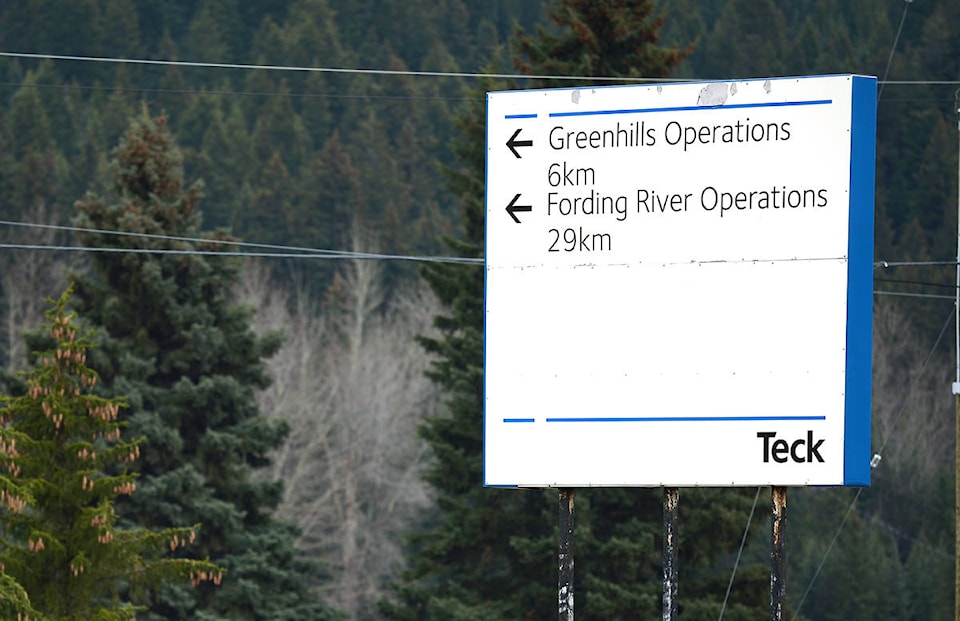Teck Coal has been fined $60 million for violations under the federal Fisheries Act related to selenium and calcite contamination of Elk Valley rivers nearly a decade ago.
The coal mining company pleaded guilty to two counts during proceedings in Fernie on Friday, as crown lawyers and defence counsel for Teck outlined a joint submission and statement of facts, which included the $60-million penalty.
It is the most expensive financial penalty ever prosecuted under the Fisheries Act.
The offences were entered by direct indictment, as both Crown and lawyers for Teck settled on a joint submission to avoid a trial that had potential to be one of the largest environmental prosecutions in Canadian history.
The fisheries violations date back to 2012, one related to Fording River and one related to closed ponds, which were affected by Fording River and Greenhills coal mining operations.
Teck Resources CEO and Persident Don Lindsay personally apologized in a statement released immediately after the ruling.
”Today, Teck reached a resolution of charges under the Fisheries Act in connection with discharges of selenium and calcite from our steelmaking coal operations in the Elk Valley of British Columbia in 2012,” said Lindsay.
“We sincerely apologize and take responsibility for the impacts of these discharges. Everyone at Teck is committed to responsible mining that protects the environment. Which is why, over the nine years since, we have worked hard to solve this challenge and ensure the watershed is sustained for the long term.”
The fines translate to $80,000 per day throughout 2012 on both counts, coming out to approximately $60 million. The fines were portioned off; $2 million for administrative penalties, while $58 million to be directed to the Environmental Damages Fund.
The fisheries act violations stem from impacts to Westslope cutthroat trout in the upper Fording River, which the federal government listed as a threatened species in 2005, reconfirming that designation five years ago.
In 1971, closed settling ponds were built near the Fording River to support coal mining operations, however, fish were able to move between the river and the settling ponds through a creek running between them.
While the company attempted to construct fish barriers in the early 2000s, enforcement officers determined they were not effective in 2012. Two years later, the fish barriers were repaired, preventing fish from entering the ponds.
The fisheries violations also stemmed from contamination from large piles of waste rock — excess material that is removed from the ground in order to access coal deposits and stored as large piles covering dozens of hectares.
Selenium and calcite, naturally occurring elements, leach from those waste rock piles and into surface or ground water, where it flows into tributaries and other Elk Valley waterways. While high levels of selenium can adversely affect fish mortality, calcite on river beds also binds material together and negatively impacts fish habitat.
Over the lifespan of the mines, billions of cubic metres of waste rock have been removed and placed in the upper Fording River watershed.
A representative from the Ktunaxa Nation also delivered a community impact statement, describing effects the contamination has had on the Nation’s stewardship of ancestral land and waterways, which includes much of the southern interior of B.C. and extends into the U.S. Pacific Northwest region.
Vickie Thomas told the court that Ktunaxa citizens continue to hunt and practice sustenance rights in the upper Fording River area, however, younger generations aren’t as familiar with the region due to “intensity of industrial development, difficulty of accessing areas through existing mines, concerns regarding water and windborne pollutants for coal mines and the general sense of not feeling welcome because of industrial alienation associated with the mining industry.”
Thomas added that all things are connected and must be kept in balance, as a foundation of Ktunaxa spirituality.
“Anything that affects one, affects everything else,” she said.
As part of the statement, Thomas also included an illustration that visualizes the Ktunaxa Nation’s connection to the land and water, which was done by Darcy Luke and Marisa Phillips.
Several factors were included in the joint submission, such as the seriousness of the offences, Teck’s admission of guilt, co-oporation with enforcement investigators, and work the company has done to address water quality issues over the last decade.
Teck lawyers pointed to the creation of the Elk Valley Water Quality Management Plan and the hundreds of millions of dollars that have been invested into developing active water treatment facilities at Fording River and Line Creek operations as well as saturated rock fill technologies.
Since the plan was created in 2014, Teck says it has spent $1 billion developing those technologies and constructing the facilities, with plans to spend another $1 billion on water quality initiatives over the next decade.
Currently, the company says it’s water treatment operations filter 47 million litres of water a day, with plans to double that capacity to 77.5 million litres per day over the next few years as additional facilities come online.
Teck was previously fined $1.4 million four years ago for offences under the Fisheries Act that occurred in 2014, after toxic effluent at the Line Creek Active Water Treatment facility was blamed for killing 74 fish in waterways near mining operations.
Last fall, the federal government also issued a direction under the Fisheries Act to improve water quality and prevent calcite deposits in waterways affected by Fording River and Greenhills operations. The direction set out requirements for water management complementary to the Elk Valley Water Quality Management Plan, such as diversions, mine planning, fish monitoring and calcite prevention measures, among other stipulations.
trevor.crawley@cranbrooktownsman.com
Like us on and follow us on
Want to support local journalism during the pandemic? Make a donation



